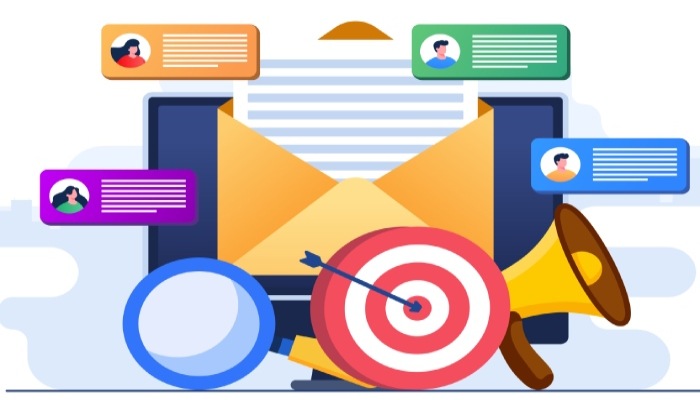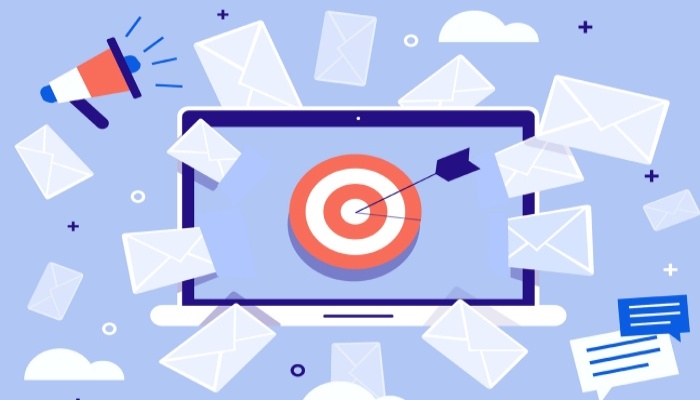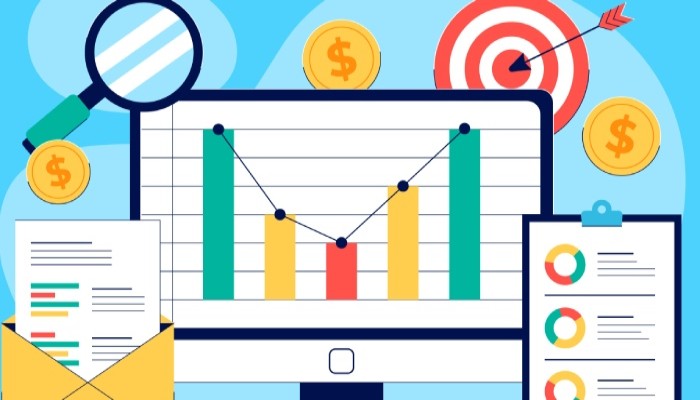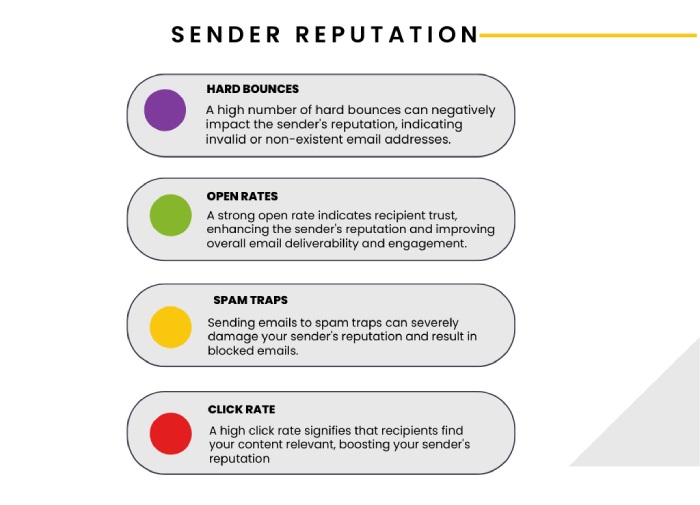Top 10 Email Marketing Metrics and KPIs Important for Your Business
Email marketing is the backbone of businesses in today’s digital era. There are several strategies that come into play for the growth and success of a business, but how can you measure the effectiveness of your campaigns? Well, email marketing metrics and Key Performance Indicators or KPIs help you comprehend how your campaigns are performing and whether you need to make any adjustments.
This blog discusses the 10 most important email marketing metrics and KPIs you should use. But before that, let’s read why you should even bother using them to evaluate the effectiveness of your email marketing strategies.
What are Email Marketing KPIs?
Email marketing KPIs are measurable tactics that are analyzed to understand if a campaign is performing well. Some of the common tactics involve delivery rates, open rates, click-through rates, and conversion rates.
The insights derived from these KPIs are not just numbers; they are powerful tools that can enhance user engagement, optimize your email campaigns, and, ultimately, boost your ROI. Remember, these metrics are not one-size-fits-all; they are tailored to your industry and specific campaign goals. So, regardless of your business objectives or the nature of your products or services, incorporating KPIs into your email marketing strategy is a must for business growth and future planning.

Why Should You Evaluate Email Marketing KPIs?
Assessing email marketing KPIs gives you insights into your campaign, equipping you with figures and trends to base your future decisions on. It helps you engage more people and get a fruitful return on investment.
We have enlisted some compelling reasons that will encourage you to start calculating email metrics–
Understanding Target Group’s Behaviour and Preferences
Email campaign metrics reports let you know how recipients interact with emails you send—for example, how many of them opened them (open rate) and how many clicked on the links (click-through rate). Low open and click-through rates indicate that your campaign isn’t performing well, driving you to make changes or discard it altogether. Without KPIs, you will be shooting in the dark, wasting time and money.
Better Email Deliverability
Monitoring KPIs lets you know how many emails are getting placed in the primary inboxes of recipients and how many are getting marked as spam or bouncing back. More instances of spam and bouncebacks affect your domain’s reputation and deteriorate the email delivery rate as recipients’ mailboxes consider your domain suspicious and spammy.
On the other hand, a better email delivery rate fosters relationships with subscribers, increases reach, improves brand reputation, and helps you comply with anti-spam laws and email service provider guidelines.
Lesser Unsubscribes
Lesser unsubscribes indicate that people are interested in your emails, which also improves the email delivery rate. By assessing KPIs, the marketing team can improve their content and edit the mailing list.
Better Conversion Rates
The conversion rate in email marketing refers to the percentage of email recipients who complete a desired action after clicking on a link or call-to-action within an email. This action could vary depending on the goal of the email campaign, such as making a purchase, signing up for a newsletter, filling out a form, or downloading a resource.
Which Email Marketing Metrics and KPIs Should You Evaluate?
The digital landscape is very competitive, and measuring the metrics of email marketing campaigns helps you make informed and factual decisions. Here are important KPIs that you should assess to stay relevant in the industry-
1. Open Rate
What is it?
The email open rate indicates the percentage of recipients who opened the email out of the total number of recipients.
Why is it Important?
It indicates whether people are interested in opening your email. It basically reflects how interesting and engaging the subject lines of emails are and whether they resonate with the needs and preferences of your target audience.
Factors Affecting Open Rate
The primary factors that shape the open rate are subject lines, senders’ names, and sending time. Emails with irrelevant and general subject lines don’t get much attention.
How to Improve Open Rate?
To begin with, write personalized, relevant, and resonating subject lines so that recipients become eager to read full messages. Also, use the try-and-test method to determine the best time to send emails; the ideal time is when more people open your email within the first two hours of receiving it.

2. Click-through Rate (CTR)
What is it?
The click-through rate indicates the percentage of email recipients who clicked on links included in emails.
Why is it Important?
It reflects how well your email content holds your audience’s interest and draws them to click links. A high click-through rate validates the relevancy and worth of your content in the recipients’ eyes.
How to Improve the Click-through Rate?
Ensure the content and links are compelling enough to encourage your subscribers to visit them. Use clear, easily visible call-to-action buttons to guide recipients through the next steps.
3. Conversion Rate
What is it?
It is the ratio of email recipients who performed the requested action, such as purchasing, filling out a form, submitting some information, signing up for services, etc.
Why is it Important?
It’s the ultimate metric for evaluating the efficacy of an email marketing campaign, as it reflects how well your emails encourage the subscribers to take the requested action. It’s a sign of a successful campaign.
How to Improve the Conversion Rate?
To improve the conversion rate, you should streamline your email content, call-to-action, and landing pages.
To do this-
- Align email content with call-to-action: Don’t force the call-to-action button. It should naturally swing in the content, and it’s best to hyperlink words and phrases within the content so that subscribers see them as they read. For example, if your email is about notifying subscribers of an upcoming sale, then hyperlink the product names.
- Establish landing page consistency: Ensure that the landing pages linked in your emails fulfill the promises made within the email. If your email highlights a particular sale, the landing page should prominently showcase that sale, facilitating a seamless purchasing process for the subscriber.
Remember that just monitoring these metrics won’t help if you don’t adjust and align the email elements as required. The ultimate goal of any email campaign is to reach a larger audience and encourage them to take the requested actions. If you fail to achieve this, the entire campaign will fail.

4. Bounce Rate
What is it?
The email marketing bounce rate is the percentage of outgoing emails that return as undeliverable. A high bounce rate can indicate issues with your email list quality, such as outdated or incorrect email addresses or problems with your email-sending practices. It’s important to monitor and manage your bounce rate regularly to maintain a healthy email list and improve deliverability.
Types of Bounces
There are two types of email bounces;
- Hard Bounces: Hard bounces happen when your subscribers’ list isn’t appropriate, meaning you send emails to either non-existing or invalid email addresses. To avoid hard bounces, regularly update your mailing list, and most importantly, don’t buy email lists from random sources at cheap rates. It’s better to create your own list from scratch; however, if you still want to buy it, consider only reputed sellers.
- Soft Bounces: Soft bounces prompt out of temporary issues, like server downtime or a subscriber’s full inbox. Your email server tries resending emails automatically upon soft bounces, but you can also do it manually. There’s only little that’s in your hand when it comes to fixing soft bounces, as the issue lies at the receivers’ ends.
Calculating Bounce Rate
The standard formula for counting soft bounces is to divide the number of soft bounces by the total number of emails delivered. Then, multiply the resulting figure by 100, which will be a campaign’s overall bounce percentage.
Importance
A high bounce rate indicates problems with your mailing list and recipients’ mailboxes. Obviously, handling the latter is not in your hands, but the former is. A poor bounce rate impacts your email campaign and the domain’s reputation. So, aim at maintaining a bounce percentage of 2% or less to build a positive sender reputation.
Factors Affecting Bounce Rate
- Spam filters: Overly aggressive spam filters raise false positives, causing emails to bounce back or be placed in spam folders.
- Poor email-sending practices: Sending emails too frequently, sending to purchased email lists, or engaging in other spam-like behaviors can increase bounce rates and harm the sender’s reputation.
- Recipients’ full inboxes: Recipients’ mailboxes get full and become unable to receive more emails.
- Recipients’ server issues: This includes temporary server downtimes and other technical problems that are not entirely in your control.
- Invalid or inactive email addresses: Mistyped, outdated, or inactive email addresses on your list are more likely to result in bounces.

Ways to Have Lower Bounces
- Develop quality content: Send valuable and relevant content that passes spam filters and resonates with subscribers’ expectations.
- Double opt-in: Enabling double opt-in ensures your emails reach the right set of people only.
- Regularly clean and update the mailing list: Remove email addresses of recipients who don’t open your emails or place your messages in spam folders. These recipients are simply not your target audience.
5. Unsubscribe Rate
What is it?
The unsubscribe rate is another key metric that represents the percentage of subscribers who chose to unsubscribe to your emails.
Why is it Important?
Calculating the unsubscribe percentage is important as it tells two things: one, are you reaching your target audience, and second, is your content meeting their expectations or not. You basically understand if you are able to satisfy the recipients.
A high unsubscribe rate reflects that people are not resonating with your offerings and will not take the requested action.
How to Minimize Unsubscribes?
- Include relevant, concise, and easy-to-understand content in your emails. Nobody has time to read long promotional emails, especially those with dull language and graphics.
- Don’t hog your recipients’ inboxes. Control the frequency of emails sent daily, weekly, and monthly.
- Include an option for users to adjust their email preferences so they don’t opt out outright. Some examples can be frequency adjustments and segment-specific subscription options.
6. Spam Complaint Rate
What is it?
The email spam complaint rate also called the abuse rate, is the percentage of email recipients who mark your emails as spam or report them as unwanted or abusive. This percentage shows whether the recipients are offended or dissatisfied with your messages.
To calculate the spam complaint rate, divide the number of spam complaints by the total number of emails delivered, then multiply by 100 to get a percentage.
Spam complaint rate = (Number of spam complaints / Total number of emails delivered) * 100
Why is it Important?
Spam complaints affect your domain’s sender reputation and email delivery. Calculating this percentage can help determine whether you need to tweak your content or update the email list.
Ways to Reduce the Spam Complaint Rate
- Opt-in only: While you may be tempted to send promotional emails to as many recipients as possible, it isn’t an intelligent decision as many people will mark your messages as spam or abusive. So, send emails only to the ones who explicitly choose to receive them.
- Clarity in subscription: Categorically segregate the types of emails in a campaign, such as promotional, transactional, welcome, newsletters, abandoned carts, feedback, and announcements. Allow recipients to choose what category of emails they want to continue receiving so they don’t block or mark your domain as spam altogether. The more transparent you are, the better the percentage of other metrics will be.
- Content quality: The email content should be valuable, high-quality, and compelling. Focus on clear and crisp subject lines, interesting opening with a question or a fact, all-device compatibility, and personalization.
7. Overall Return on Investment
What is it?
Return on investment is an important email marketing metric as it measures the fruitfulness of your campaigns by calculating the net profit. It’s evaluated by taking the revenue generated and expenses into consideration. If the net profit is less than the money you spent on the campaign, then it’s a loss.

Why is it Important?
The average industry-wide ROI of an email marketing campaign is 122%, reflecting its popularity as one of the best marketing methods. So, directing strategic and calculated efforts in this direction can be very beneficial for businesses.
Strategy to Increase ROI
- Direct relationship with other marketing methods: Email marketing is not the only marketing channel. A good business always opts for a combination of marketing channels like social media, PPC advertising, hoardings, etc. So, comparing the profits with other marketing channels helps you understand which strategy is working for you and how exactly you need to divide and allocate budget and resources among all marketing channels.
- Campaign-oriented evaluations: A marketing team generally runs different types of email campaigns, and analyzing which one is the most profitable helps strategize goals and moves.
- A/B testing: A/B testing evaluates the effectiveness of email marketing campaigns by comparing two versions of an email (A and B) to determine which performs better in achieving predefined goals, such as open rates, click-through rates, or conversions. Marketers can identify what resonates best with their audience by testing elements like subject lines, content, visuals, or CTAs and optimize future campaigns for improved engagement and results.
- Frequency adjustments: Sending too many emails impacts ROI as they annoy receivers, prompting them to click the ‘unsubscribe’ button. On the other hand, sending too few emails results in losing opportunities as you don’t reach enough of an audience.
- Mobile optimization: Many people access emails on mobile, so ensure they are able to open and engage with your emails on all kinds of mobile devices. This is no longer an optional measure but a necessity for enhanced ROI.
- List segmentation: By dividing your email list into segments based on location, purchase history, or engagement levels, you can improve the effectiveness of your campaigns, ultimately increasing your return on investment (ROI).
8. List Growth Rate
What is it?
This integral email campaign KPI assesses the rate at which your email list grows so that you know how many new people subscribed and how many of the existing ones unsubscribed. Calculation of the list growth rate also takes spam complaints into consideration.
Why is it important?
To reap the long-term benefits of email marketing, you need to establish a linear graph for the list growth rate. An expanding list offsets the natural decline caused by unsubscribes or inactive users, maintaining a steady inflow of new subscribers.
Ways to Improve the List Growth
- Incentive-based sign-ups: Your target audience is more likely to subscribe to your email list if you promise them discounts, coupons, free ebooks, exclusive content, etc.
- Promotions on different marketing mediums: Don’t rely on just one platform; explore the audience on other platforms, such as social media, websites, offline events, etc., to market your business. You will reach different audiences on different platforms, thus having more opportunities to engage and convert people.
- Easy sign-up process: Multi-step and complicated signup processes put off potential subscribers. So, focus on making the subscription process a breeze for them.
- Regular content updates: Needless to say that stale, invaluable, and monotonous content deters subscribers. So, keep sending fresh content so that your email list keeps expanding.

9. Email Sharing or Forwarding Rate
What is it?
Email sharing or forwarding rate is the percentage of recipients who shared or forwarded your emails for any reason.
Why is it Important?
Figuring out this percentage is essential as email sharing and forwarding extend your reach beyond your mailing list. In most cases, forwarding or sharing emails is a positive sign as it validates that your email is well-drafted, clearly conveys the message, and meets the expectations and needs of the audience. Moreover, your subscribers’ funnel will also expand if recipients take this step.
How to Encourage Email Sharing?
- Share buttons: To make it effortless for recipients to share or forward emails, you must add an easy-to-spot ‘share’ button in the email body.
- Quality content: Develop engaging, value-adding, and relevant content for your audience. This way, they will forward your emails to others who might also be interested in receiving them. Think of it as Instagram’s culture of sharing reels and memes.
- Incentive program: People don’t mind going a little extra mile for rewards and discounts. So, consider offering rewards, coupons, deals, etc., for recipients who share or forward your emails. Remember, this strategy will only work when you clearly mention the incentive in your message.
- Call-to-action for sharing: Don’t hesitate to request the recipients to share the emails with others explicitly. Add a clear, actionable sharing button.
10. Revenue Per Click
What is it?
Revenue per click is a financial KPI that includes evaluating the average revenue made whenever a recipient clicks on a link in your email. It’s important to know the financial impact of your email campaign.
Why is it Important?
It’s relevant because it helps gauge the investment needed to improve the click-through rate. Eventually, every business’ efforts are directed at making profits.
How to Increase the Revenue Per Click?
- Landing page optimization: The landing page linked in your email significantly impacts conversion rates. Thus, optimizing your landing pages can drive higher conversions and boost revenue per click.
- A/B testing: Try different things and see what works best for you. You can push out different offers, subject lines, content layouts, languages, tones, CTAs, etc., to figure out what your audience likes and engages with the most.
- Audience segmentation: Create different categories of subscribers based on age, demographics, user behavior, and other preferences so that you can send more personalized and targeted email messages. Remember that not everything works for everyone. You have to adjust things accordingly.

Tips to Choose the Most Suitable Marketing Metrics for Your Goals
Your marketing team and competitors can have different strategies based on the overall goals. That’s why it’s important to identify which email metrics are critical for achieving your goals and how to achieve them.
Subscriber List’s Expansion Rate
If you want to see constant growth in your sales funnel, website traffic, and blog readers, then focus on boosting the subscriber list growth rate through email campaigns. Don’t forget to include clearly visible and one-click call-to-action options like ‘Subscribe to Our Blog’ or ‘Be a Part of Our Weekly Email List.’
Explore online blogs and videos to create a strategy for growing your subscriber list. Some general ways include promoting an email list across various channels for a wider audience and using compelling copies and persuasive call-to-actions to encourage sign-ups.
Dormant Subscribers
Keep a log of subscribers who don’t engage with your emails at all, as these are not your target audience and will never take the actions you request. In fact, email services will flag your domain for low engagement, impacting your sender’s reputation.

Even HubSpot, one of the tech biggies, once removed 250,000 subscribers in a single go to improve email delivery.
Number of New Leads
To fulfill the lead generation needs, create content that clearly requests recipients to fill out a form. Now, based on what you prefer and prioritize, you can focus on all leads generated or only the new ones added to your database. For the purpose of metrics, keep a record of leads captured daily, weekly, and monthly.
Lead-to-Customer Conversion Rate
To convert prospects into customers and clients, ensure the email content directly speaks of your products or services. You can include CTAs like “Get a demo,” “Watch a Video of Our Product in Action,” or “Start a Free Trial.” For this goal, closely monitor changes in your lead-to-customer conversion rate.
Final Words
When it comes to determining the right set of email marketing metrics for your business, the approach varies depending on the industry, resources available, budget, operating style, target audience, and overall business goals. So, consider all this before zeroing down to metrics suitable for you. Utilizing our AI-powered cold email software can revolutionize your outreach strategy by optimizing message delivery and tracking essential performance metrics.
Moreover, review these metrics regularly so that you can make adjustments as and when required.


